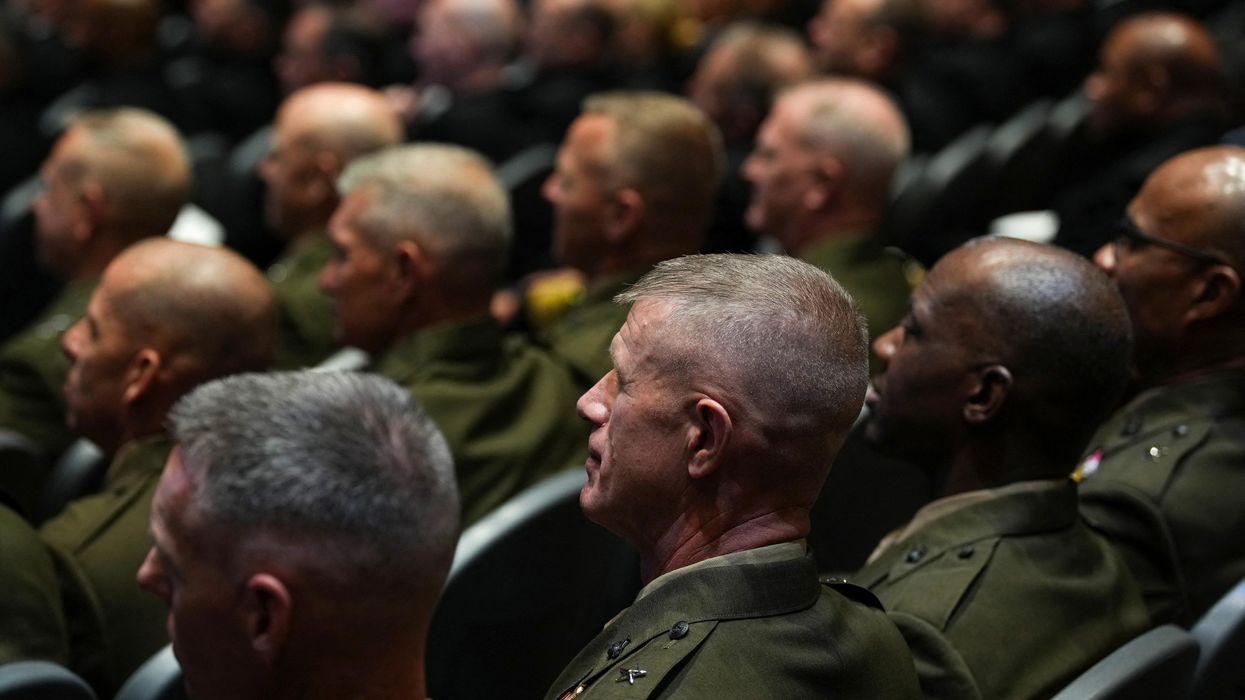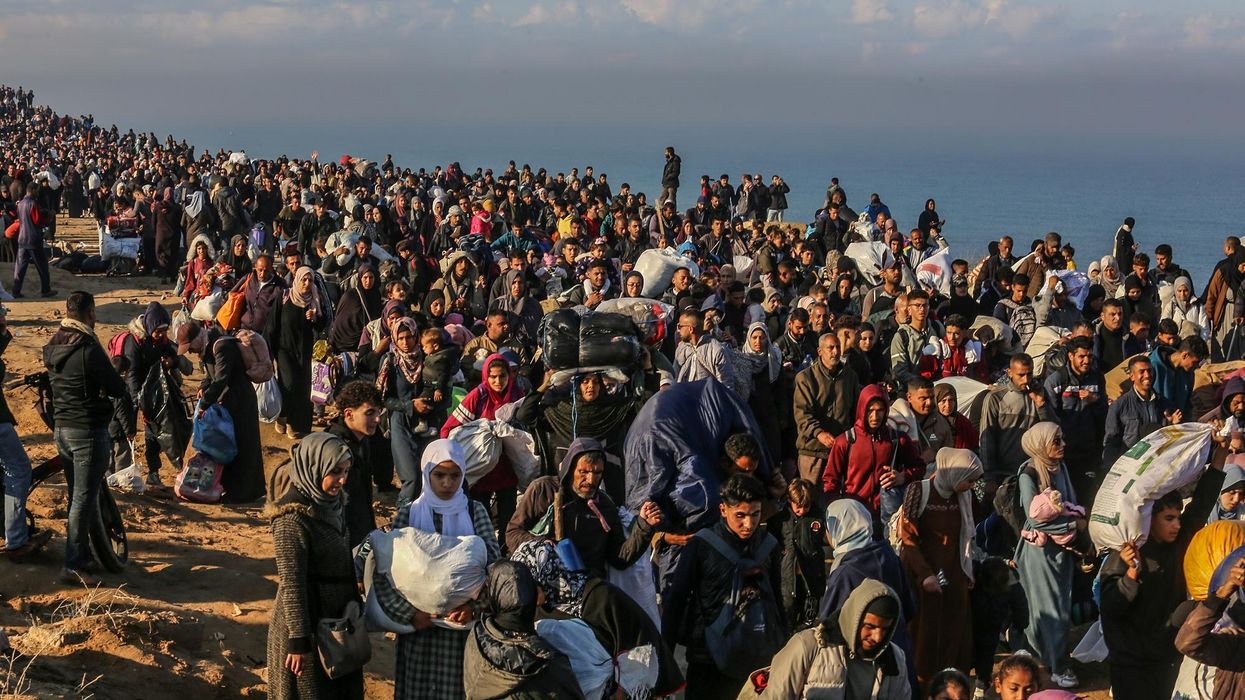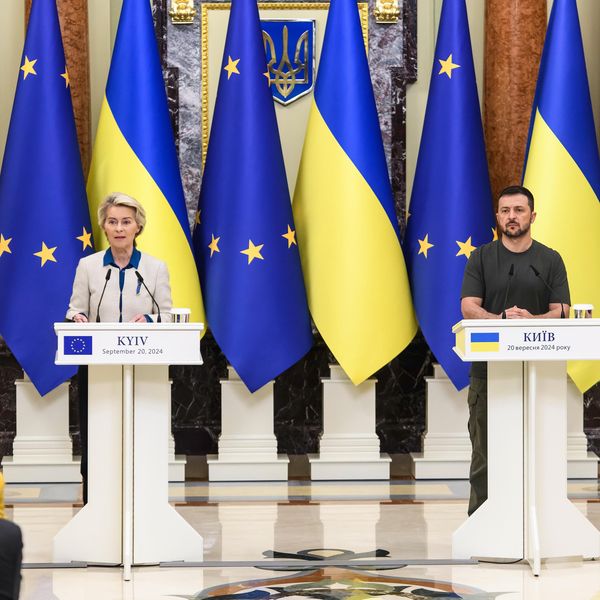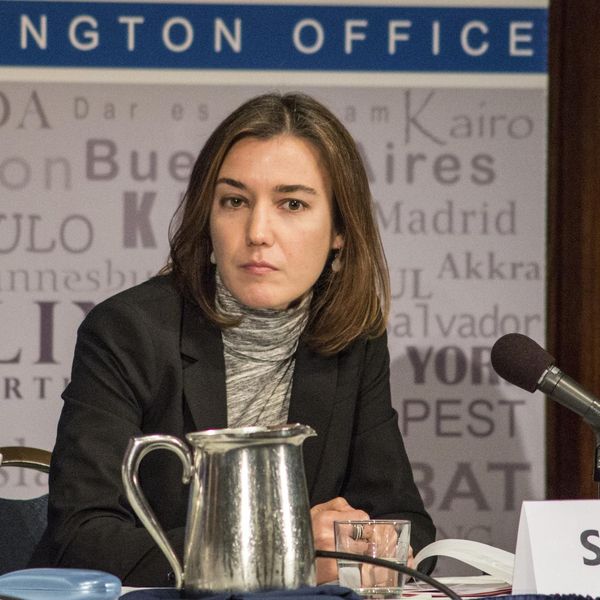The summit of the four-nation Quad grouping (comprising the U.S., Japan, Australia, and India) was significant in that it was the first-ever leaders’ meeting, and, unlike its recent ministerial gatherings, resulted in a joint statement reflecting the common position of all four governments.
The statement notably and predominantly stressed non-traditional security themes, including vaccines and climate action — a welcome recognition that global health and the environment are among the most important areas of focus. Working groups for these issues, as well as for infrastructure investment, were also announced.
But though China was not mentioned by name, customary references to freedom of navigation, democratic resilience, and the East and South China Seas, remind us that distinguishing from and countering China remains the Quad's core focus.
A new brief from the Quincy Institute unpacks the complexity of the U.S. relationship with the Quad and its only member which is not a formal U.S. ally — India — and warns against growing risks to the United States and the region due to the over-militarization of the grouping. For his part, President Biden has already warned of “extreme competition” when it comes to China. His administration has also failed to reverse any of President Trump’s assertive policies toward Beijing. Moreover, current Indo-Pacific Coordinator Kurt Campbell and National security Advisor Jake Sullivan have in the past prioritized leading with competition and only secondarily choosing cooperation when it comes to dealing with Beijing.
A degree of competition toward China is inevitable given the Quad's current membership, the region's geopolitics, and Beijing's own intrusive assertion in its neighborhood — especially with respect to Taiwan and India. It is not a coincidence that all four members of the Quad are, to some extent or the other, China’s geopolitical rivals.
In truth, however, there are different types of competition in global politics. The most benign kind is one in which nations or groups (or clubs) of nations compete in positive-sum ways, i.e., benefiting all sides, even if as an unintended byproduct. Thus, the stress on health security was substantially a competitive response to Chinese vaccines making significant headway in the Southeast Asian region.
But the Quad’s joining the fray in this space ought to be beneficial for all involved (as long as it desists from displacing Chinese or Russian vaccine supplies to the region.) More vaccines financed by the United States and Japan, manufactured in India, and delivered by Australia to Laos or Indonesia for example, can only aid in saving more lives, with all its positive impacts on the economies of the region and the world. It also has the potential of earning goodwill for the Quad’s member nations.
Similarly speeding up infrastructural connectivity, if done in an equitable and environmentally sustainable manner, can bring greater prosperity to a region that still suffers from substantial poverty. And climate change, perhaps the greatest challenge to humanity in our time, needs to be a part of practically every international initiative – the Quad being no exception.
Then there is a second sphere of competition, which is partially exclusionary and could have mixed impacts in terms of broader benefits. Themes such as critical technologies and reordering supply chains naturally fall into this category. While there are benefits for members of technological and supply chain alliances, they typically come with conditions that deny space to competitor products on security grounds. There may be overall regional benefits due to the knock-on effects of faster technology spread, but there could also be losers and reversals of existing integration and interdependence, which could in turn detract from security.
The riskiest sphere is competition in the military plane. Much is going to be demanded of militaries in the future in respone to growing natural disasters due to climate change, common non-state threats such as terrorism and piracy, and perhaps even the logistical needs to deliver emergency supplies during health crises such as pandemics or major refugee crises. In these arenas, greater military planning, coordination, and exercises have major benefits between members of clubs. But when military activities and exercises are designed predominantly with warfighting with state actors in mind, the risks come to the fore.
The increased rhetorical emphasis on nontraditional security should not blind us to the facts on the ground. Thus far, the Quad’s concrete actions have largely been in the military domain with a warfighting focus, also involving deeper military-to-military integration of the four Quad members. This is especially consequential for India, which has a potent military, but is the only nation within the Quad that is not a U.S. treaty ally or an integral part of the U.S. security architecture in Asia. Washington has attempted to integrate India into this architecture by signing key military-to-military interoperability agreements. The United States and India have also expanded Malabar, an originally bilateral exercise, into a signature exercise of the Quad by including Japan and Australia on a permanent basis. These developments suggest that the Quad may be evolving from a diplomatic initiative with military dimensions into a military bloc-like structure.
Thus, the Quad finds itself at a crossroads. At the end of the day, the grouping will have to decide what its core calling is. Does the Quad seek to be a more inclusive platform aiding the provision of global public goods in Asia with its military dimension oriented toward this purpose, or will it be a grouping that helps deepen warfighting-oriented militarization, bloc formation, and friend/foe dynamic in the region? If it is true to its stated values, the Quad will embrace more of the former and pull back from the latter.
This implies that the ongoing progression of the Quad toward a military bloc-like structure should not be pursued. The Quad should be repurposed from a military mission, which has become its core calling, to its original focus on nontraditional security. This means a partnership of pluralist democracies employing a techno-economic, soft-balancing, and normative approach toward China rather than military bloc formation, arms racing, and intensifying exercises.
India is currently the weakest member of the Quad in terms of economic heft (though in certain spaces such as vaccines, it is among the biggest global players.) The question of India’s integration into the Quad is best pursued by creating conditions favorable to India’s comprehensive development, particularly in the energy, environmental, and supply-chain spaces. This will constitute a lower-risk path toward catalyzing a multipolar Asia.
But the competitive aspects of the Quad should not preclude it from including China on as many fronts as feasible to enhance the cooperative and stabilizing aspects its summit rhetoric emphasized. Climate change is an excellent place to start, including ramping up commitments from all sides on mitigation, adaptation, technology, and finance. The security implications of climate change can also be addressed with both China and India, keeping their sensitivities on sovereignty in mind. But there is no reason the conversation with China cannot extend to themes such as infrastructure and health.
The United States, as the grouping's most powerful and consequential member, will however need to make that shift in its own grand strategy with respect to China for the Quad to meaningfully change course. The new Quincy Institute brief provides specific, out-of-the-box recommendations for minimizing risk to the United States and the region by reorienting its relationship with India and the Quad. Read it here.
















